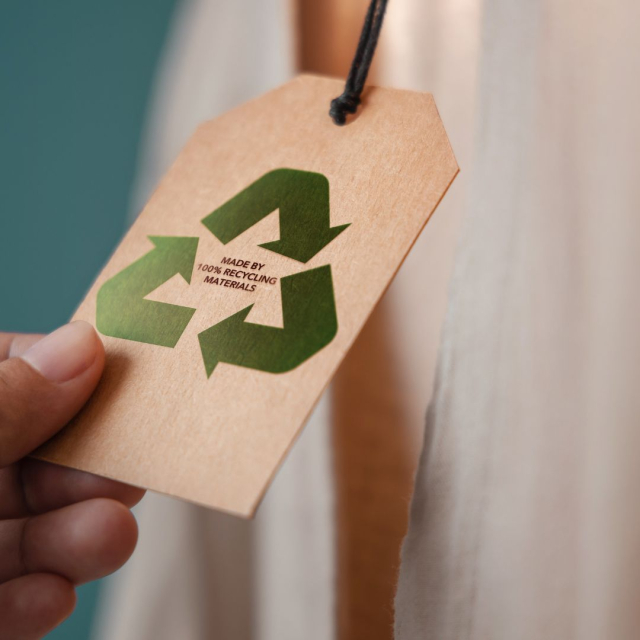Sustainable fashion has become a growing trend around the world. More and more people are looking for alternatives that reduce the environmental impact of the textile industry, one of the most polluting industries globally. One way to contribute to this change is by learning to make clothes from recycled materials.
The importance of recycling in fashion
Mass production of clothing generates huge amounts of waste, not only in the manufacturing process, but also in the waste of garments that could be reused. According to the UN, 92 million tons of textile waste are produced every year, an alarming figure that highlights the need to adopt more sustainable practices.
Recycling materials to make clothing not only reduces textile waste, but also decreases the consumption of resources such as water, energy and chemicals. It also encourages creativity and allows for the customization of unique garments.
Recyclable materials for making clothes
Before you begin, it is essential to identify the materials you can reuse. Here is a list of options:
1. Old or unused clothing
Often, clothes that we no longer use can be transformed into something completely new. For example, an old t-shirt can be turned into a reusable bag or a top.
2. Recycled fabrics
You can get second-hand fabric from markets, charity shops or even from other clothes. There are also companies that make recycled fabrics from plastic bottles, recycled cotton or reused synthetic fibres.
3. Unconventional materials
Plastic: Plastic bags can be fused together to create waterproof fabrics.
Paper: Treated paper can be used for details or decorative designs.
Scraps: Leftover fabric scraps from other projects.
4. Reusable accessories
Buttons, zippers, buckles and other elements from old garments can also have a second life.
Necessary tools
To work with recycled materials, you will need some basic tools:
Sewing machine (although you can also sew by hand).
Fabric scissors.
Needles and threads.
Measuring tape.
Pins.
Iron.
Pattern paper.
Steps to make clothes with recycled materials
1. Selection and preparation of materials
Go through your wardrobe or search thrift stores for items that are no longer worn. Wash and iron fabrics to make sure they are clean and manageable. If you use non-textile materials, such as plastic, be sure to clean and prepare them properly.
2. Design your garment
Before cutting any material, create a sketch of the design you want to make. Define what type of garment you are going to make and how you will combine the different materials.
3. Create a pattern
Use paper to draw the pattern for your garment. If you are inexperienced, you can look up patterns online or use an old garment as a model. Make sure to adjust the measurements to suit your needs.
4. Cut the materials
With the pattern ready, cut out the necessary pieces from the selected materials. Use sharp scissors and work on a flat surface for greater precision.
5. Put the pieces together
Start pinning the pieces together to make sure they fit together properly. Then, sew the pieces together using a sewing machine or by hand, depending on your preference.
6. Final adjustments
Try on the garment to check that it fits properly. Make adjustments if necessary. Add finishing touches such as buttons, zippers or decorations.
Examples of projects with recycled materials
1. Jeans turned into shorts
Cut up an old pair of jeans to transform them into shorts. You can add details like lace or patches to personalize them.
2. T-shirts transformed into bags
Cut off the sleeves and collar of a t-shirt, sew the bottom together, and you've got yourself a reusable bag.
3. Dresses made from sheets
Old sheets can be turned into light dresses that are perfect for summer. All you need is a good pattern and some creativity.
Benefits of making recycled clothes
Waste reduction: Helps reduce the amount of textile waste in landfills.
Economic savings: Creating your own clothes with recycled materials is cheaper than buying new clothes.
Unique style: You design personalized and original garments that reflect your style.
Learning and creativity: You develop manual skills and foster your creativity.
Challenges and solutions
1. Difficulty in finding materials
Solution: Explore secondhand markets, swap clothes with friends, or collect materials at community events.
2. Lack of sewing experience
Solution: Look for tutorials online or take basic sewing classes.
3. Time and dedication
Solution: Start with small projects and gradually increase complexity.
Positive impact on the environment
Every recycled garment represents a step towards a more sustainable future. By reusing materials, you contribute to reducing carbon emissions, saving water and decreasing pollution generated by textile production.
Making clothes from recycled materials is a creative, sustainable and affordable way to help protect the environment. With a little ingenuity and dedication, you can transform unused materials into unique garments that reflect your personal style. Go ahead and give it a try and be part of the change towards more responsible fashion!
